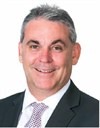Read fine print of building insurance before something goes wrong
Darren Reilly, Commercial Adviser at IOOF Insurance Brokers, discusses why it’s important to carefully read the Product Disclosure Statement for your building insurance. Reading the fine print in order to make a claim is simply too late; there is no such thing as a “free lunch” when it comes to insurance, he warns.
 |
Reading a Product Disclosure Statement (PDS) takes time and isn’t most people’s idea of fun, but it can be enlightening. Your comfortable presumptions about what will be covered can be shattered. There are often exclusions in policies that are counterintuitive and appear to exist purely to allow the insurer to refuse the claim or reduce the amount required to be paid to you.
Many building insurers offer very low online headline premiums but if you delve into these policies you can find they are often woefully inadequate and have so many exclusions you would struggle to find a situation where they would pay a claim.
To avoid unpleasant surprises when you need to claim on your building policy there are two options: You can either thoroughly scrutinise the PDS, so you know exactly what you are covered for or, you can ask an insurance broker to do the work for you. Insurance brokers are aware of many common exclusions and can highlight them, so you can make an informed decision. They also know what exclusions are reasonable and those that only exist to allow the insurer to quote a low price for the policy. If you already use an insurance broker, they will do this for you at policy renewal.
When it’s time to renew your policy don’t choose the cheapest policy
You need to decide what claim events are likely to occur based on your personal situation. To understand which policy is right for you, you’ll need to try to make a fair comparison rather than simply focus on headline premium prices. This is complicated and time-consuming for individuals whereas insurance brokers have knowledge and experience based on handling numerous claims, making it easier and quicker for them.
Ensure you make a fair comparison between policies
There are no ‘free lunches’ with insurance. Actuaries at all the insurers use similar calculations when deciding on premiums so except when insurers decide to offer irrationally low pricing for a specific reason, such as boosting market share, what you pay for is what you get. This means cheaper policies will have more exclusions, higher excesses and pay a smaller amount for claims.
Tips for building insurance
Review your existing policy and see what you are covered for, what the limits are and what is excluded. Insure your building for the amount it will cost to replace, which could well be more than the amount you could currently sell for. Check whether you are covered for lighting damage, fire, third-party liability, vandalism, landscaping, animal damage and temporary accommodation arrangements.
In the case of fire, some insurers will only cover damage caused by flames but not damage caused by heat and smoke. This type of exclusion means the cover is approaching useless because smoke and heat damage are commonly known to occur but without flame ignition. We see claims for smoke and heat damage caused by heated oil in frying pans but there have been no flames. The black smoke stains the walls, ceilings and curtains.
Don’t scrimp when insuring your largest asset
Your home is often the largest asset you own so trying to save a couple of hundred dollars by choosing a cheaper policy is a decision you may regret. Instead, take the time to understand your policy and its limitations. If you are time poor or unsure of your ability to decipher the various exceptions and terms in policies, use an insurance broker. If the worst happens and you must make a claim, you’ll be happy you did.
General Insurance Adviser Darren Reilly started his career with AMP General Insurance working in a number of roles including underwriting. He joined the Wenck Group in 1991, becoming a partner in 1996 and participating in the 2008 merger which formed Shadforth Financial Group, subsequently rebranding the insurance business to IOOF Insurance Brokers. Darren is a Senior Associate of the Australian and New Zealand Institute of Insurance and Finance (ANZIIF) and has had strong industry involvement through serving as Chairman of the Australian Burglary Insurance Surveyors Association (QLD) and as Vice President of AFMA in 2004 and 2005. He has been involved in large portfolio transfers with underwriters and negotiating terms of business. He is currently NIBA committee representative. Darren specialises in providing tailored insurance programs to protect assets, mitigate personal and professional liabilities and other personal risks for businesses, farms and corporations in Australia, New Zealand and the Pacific Islands. Contact Darren at darren.reilly@ioof.com.au or connect via LinkedIn
Disclaimer: This is general advice only and does not take into account your financial circumstances, needs and objectives. Before making any decision based on this document you should assess your own circumstances or seek advice from your financial adviser. Part of the IOOF group.